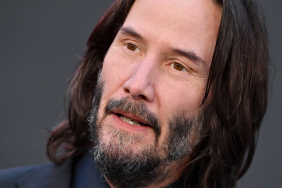How did you get all the IMAX equipment around these exotic locations?
Jon: I think probably most of the places we went, because we did have a lot of equipment, and we wanted to be able to move the camera a lot, so in most locations we had at least a 30 foot crane and we wanted to differentiate this film from other documentary films that have been shot in similar places by being able to really have a lot of movement with the camera. So, it just really meant having a lot of people there to help carry weight and get into places and other than that, it was just taking a lot of time to get to these places.
Karen: I think that the means of transportation we were using to get to the objective too, because in the example Jon gave, in Dead Valley in Namibia in Africa earlier with the sand dunes, in that case we were driving a four wheel drive to the end of the road literally and then getting out and hoofing it. But in other cases, we were traveling down rivers in long boats and canoes of sorts to get to some shore lines that you wanted to then negotiate straight up over the banks of the river to get to a village.
How do the tribes respond to camera equipment?
K: You know, it was a common response in all cases that we were welcomed and received warmly by the indigenous cultures. And that was really quite a mind blowing experience for us because we had assumed that because everything would look so foreign to them that there would be a lack of trust or a lack of communication there, but it was quite the opposite. These people were extremely open to what we had to do and I think that has a lot to do with how they live their lives generally. It wasn’t the filmmakers coming in and crashing their village. It was more that they view the world with open arms.
J: Yeah, and I think there’s just a real sense of curiosity too, so they were just fascinated with what we were doing. They probably thought we were kind of crazy because just the whole concept of taking a picture is something that is completely foreign to them. And when we come in there with all this equipment and are doing something that they just can’t fathom why we’d be doing that, just the look of curiosity on their face, I think they just thought we were crazy.
K: And also a great sense of humor. I think so many times when the reaction could’ve been a furrowed brow, instead we just got mouths wide open and just laughing hysterically. They thought it was quite comical actually what we were up to.

J: Well, the biggest advantage is the size of the film frame and what happens when you project that on that giant screen. It’s the most real, most high-quality motion picture experience that you can have. That’s the thing that as a filmmaker that I really try to focus on and make sure that every image in the movie that I make deserves to be on that giant screen and that’s really a starting place for me is to just try and make sure that the photography for the film is incredible. That’s what people really expect when they go to one of these theaters.
K: This film was shot entirely with IMAX cameras, 65mm, first frame to end frame of the film, so we were happy to be able to achieve that.
J: You know, a lot of the films these days are sort of a mix of different types of cameras and film, so we wanted to make it as pure as possible so we did use the IMAX cameras for the entire film.
Jon’s the director, but you’re both collaborators?
K: We co-produce. Jon and I were co-producers as well as Jon being the director, so Jon was a producer and a director, and I was a producer, the unit production manager and the post-production supervisor. And really production of the film was a collaboration from day one.
Does it take four years to make one of these films?
J: Well, it doesn’t take necessarily that long to make the film, but yeah, ‘Extreme’ came out in ’99, so this was pretty close to four or five years. But we also conceive the idea. We develop the idea. We go out and raise the funds for it. We do the pre-production and go out and shoot the film, and then post-production as well. So, it’s not a huge- – it’s not like a studio film where it can be made a lot quicker. We’re working with a very small team over a long period of time and just doing a lot of those things ourselves.
K: I think a part of it too is whether you’re involved in other activities or endeavors while you’re in development on one film, so there would have been a large period of time before ‘Extreme’ and ‘Sacred Planet’ for example, but our company, the company Jon and I work through that we own and manage, New Street Productions is based in British Columbia, so we’re doing a lot of different things through New Street. We’ve worked on television documentaries as well and a variety of other projects in the interim, so yeah. But there is a stage when the projects greenlighted that you devote 100 percent of your time and energy to that particular project and that certainly happened in 2002 with ‘Sacred Planet’.

J: We have other projects that we’re working on as well, so yeah, we just do whatever we can, work on different projects.
Do you have a desire to make narratives?
K: We have a bunch of fuels in the fire right now. I mean, we’re definitely open to that. We’re doing some commercial work, television documentary work. We’ve got films in development. I would say the one that’s occupying the most of our collective time right now is another IMAX movie, but we’ll see how it goes, you know.
What is the next subject?
K: I would say that it takes elements of both ‘Extreme’ and ‘Sacred Planet’ in a different way, in a different type of movie. But definitely a stepping stone, it’s been a process. I think in some ways, ‘Extreme’ was a stepping stone for ‘Sacred Planet’ and equally, ‘Sacred Planet’ will be a stepping stone for the next IMAX film we do. So I think I’ll leave it at that for now.









